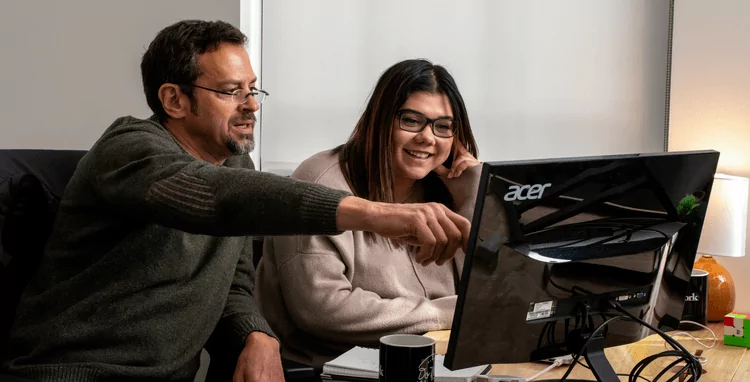Insights
 Agency work can be seen as impersonal, cookie-cutter, and autonomous. An agency signs a new Client. They go through the typical onboarding process, check off boxes on their task list, and report on outcomes. The contract can be entirely transactional—if you let it be.
Agency work can be seen as impersonal, cookie-cutter, and autonomous. An agency signs a new Client. They go through the typical onboarding process, check off boxes on their task list, and report on outcomes. The contract can be entirely transactional—if you let it be.
However, at Br8kthru we see the creation of collaborative, working relationships as critical components to the success of campaigns.
More often, we find Clients want to roll up their sleeves and dig in; they hold a personal investment in their projects and want to contribute to end results. When Client and agency teams take ownership of projects together, the outcome is always better.
One way we like to describe how these partnerships play out is analogous to doing home renovation. (Our team may like to drop analogies like mics.) Sure, you can hire someone to renovate your bathroom top-to-bottom. And odds are you’ll love the update. But, you can also hire someone to do just the plumbing and you can do the painting, cabinets, floors, etc. You’ll still love the outcome, but the sense of pride you’ll have knowing that you contributed to the process will be unmatched.
Our Clients have that same sense of pride when they actively contribute to the outcome of the project. Working through complex marketing challenges in today’s digital environments takes the brainpower of both industry subject matter experts (SMEs) and technical SMEs. This shared responsibility is what makes today's marketing partnerships unique—and a lot more fun.
Rather than operating autonomously in one service area, marketing teams plug into Client teams to provide guidance and momentum for various efforts.
This shared responsibility helps agencies by ingraining them in the ins and outs of a Client’s business, and it helps Clients because the end product is more effective and efficient.
Telling Clients or your internal team that you “want to be collaborative” is one thing, but executing on that promise is another.
Below, we dive into how you can effectively collaborate with your Clients.

How to Effectively Collaborate with Clients
-
Outline the Expectations for Your Client Early On and Be Clear About What You Need From Them
Often, if we simply ask for feedback or want to collaborate on something, we leave things too open-ended. It’s imperative to establish desired outcomes or milestones for various parts of the project. Make sure you communicate those outcomes to the client. Don’t allow decision fatigue to set in or you may end up with a project that goes off the rails.
-
Get Client Input on How Involved They’d Like to Be
Not all Clients want to be hands-on, while others insist on always being in the loop. So, during project kickoff or onboarding, make sure to directly ask your Clients how they want to work together and how they envision the process running. It may be different from how you envisioned the project or how you normally work, so try to strike a balance out of the gate. Consistency is key; don’t be wishy-washy about the expectations.
-
Schedule Regular Working Sessions Throughout Your Engagement
These should be less formal than a status call or meeting, however, you still need to have guardrails in place to ensure you cover topics required to move the project forward. While these are an optimal time for new ideas and possible adjacent service offerings to surface, be careful to not veer too far from current engagement or objective. Create an agenda several days before the working session and allow your client to add to or adjust topics if needed. Having input from the beginning cultivates the right environment for collaboration.
-
Provide Positive Reinforcement
Make sure it’s clear to the client how you incorporated their input and how they’ve had a positive impact on the project. As a B2B digital marketing agency, a lot of the projects we take on can be so complex that this progress is often incremental, not sweeping. Giving small points of positive feedback and reinforcement throughout the partnership is crucial to keeping the client engaged and excited about collaborating.
-
Keep a Written Decision Record
Whether it’s from a working session, status call, phone call, or text, make sure that you’re documenting all decisions made from the Client + agency side. Written follow-ups are a critical part of ensuring that everyone is on the same page and avoids misalignment later on. You don’t want to undo all of the good work from a collaborative working session by misunderstanding the decisions that emerged during the discussion.
The Takeaway
Collaborating with Clients is rewarding and can add massive value to individual projects, while also deepening relationships that lead to long-term partnerships. Laying out the details of your process early on, as well as what your expectations are for the Client, are paramount to the success of your collaborative efforts.
Want to hit the ground running with your marketing challenges? Tell us about it.
